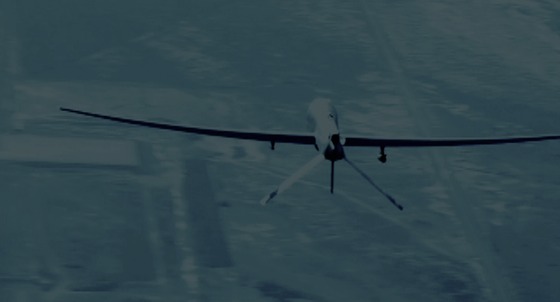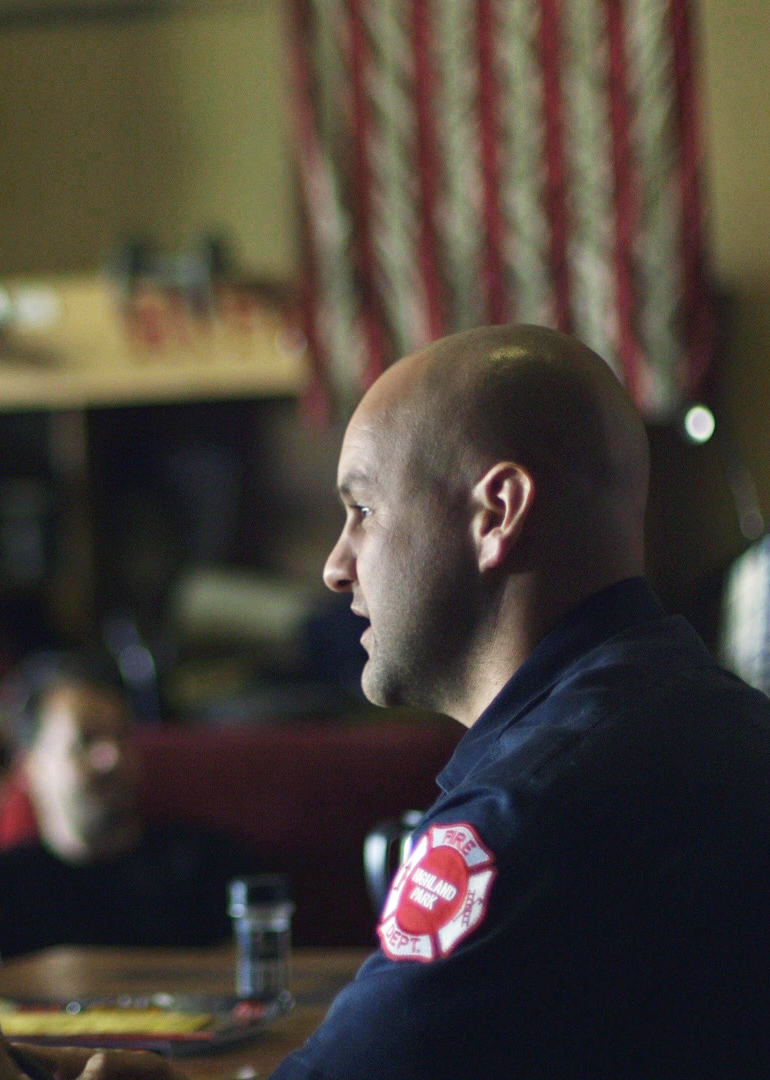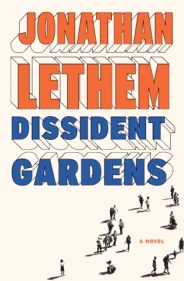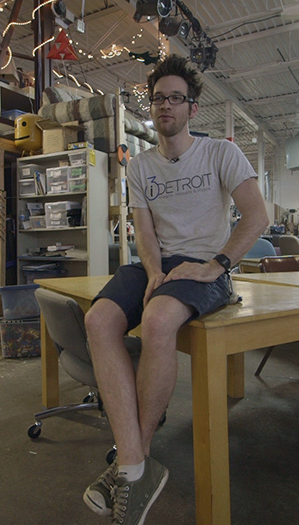Last time we talked, we discussed Philip K. Dick, a science fiction writer who had a great influence on you — not just as a writer, but as a person. You’ve mentioned early in your career wanting to align yourself with genre writers, who you called “those exiles within their own culture.” As someone well into your career, with more than a half-dozen published novels, what’s your relationship to science fiction today?
That’s a really great and really complicated, wide-open opportunity there. There are so many different angles on what it even means to speak with confidence about a science fiction genre. It’s a bit like an oasis in the desert that looks coherent from a distance, and when you get closer is not just a mirage — there’s something there — but some of it was a mirage. And certainly, there’s a lot of sand between the trees and the little trickle of water that looked like one coherent thing in the distance.
By the way, every time I laugh, you should insert [laughter], okay? I think it just makes things much better, because I’m constantly being taken for a pompous asshole when I was just trying to be funny about something. Something about my tone requires a tremendous number of [laughter], okay?
Do you want me to —
Yeah, that’s all on the record. You can say that whole thing.
So, speaking as a novelist, I feel great confidence that the hard-boiled detective story is a genre. When I read Raymond Chandler or Dashiell Hammett or Ross Macdonald or the very early James Ellroy, I see the pattern. When I wrote Gun, with Occasional Music and Motherless Brooklyn, those were genre novels: the hard-boiled detective story gave me a reliable template.
I don’t feel that way about everything. The “crime” section contains those hard-boiled detective stories, but it also contains this other genre, which is about the criminal protagonist. They’re the kinds of books you encounter in Charles Willeford and Donald Westlake. They may both be read by people who dig mysteries, but they’re different things. And they’re different things yet again from the well-ordered, English-style Agatha Christie pursuit-by-armchair-detective, sequence-of-likely-suspects-leading-to-apprehending-the-culprit-by-way-of-organized-clues that makes you go “Aha!” and “Oh ho!” That’s another genre.
But all of those things are hiding in what gets called “mysteries.” I just think “mystery” is not a genre, not in a literary sense.
And I feel that way a hundred times over about what gets called “science fiction.” Even though I’m very well versed in a lot of things that lurk underneath that label, and I’ve perpetrated some of them as a writer, and I read variously under that label, and I’ve hung out with people — a lot — who feel that they’re walking around under a meaningful umbrella called “science fiction.” To them it seems like one big, clear thing. It just doesn’t to me. It seems like a whole host of different phenomena. And some of them are literary practices, and many others are social formations. Or ideological formations.
“By the time I was good enough to have anyone pay any attention, I’d already conceived the very, very pompous ambition to write ‘literary science fiction.'”
That’s the world of science fiction that I see, so any time I talk about it, I’m forced to smash up the terminology and reinvent it, so that I can become comfortable answering your question — insert [laughter] here.
But the first thing I’ll say is that I love science fiction — I grew up reading it with none of the awareness I just described. I thought, “What a cool zone of operation. I want to be there. I want to operate that stuff myself.” Then, even as I was developing my ambition to be a writer, my appetite for other kinds of fictional play was overtaking that first impulse and complicating it.
“I liked having a cult reputation. It felt very appropriate to me.”
By the time I was good enough to have anyone pay any attention, I’d already conceived the very, very pompous ambition to write “literary science fiction.” That was the simplest thing to call it at the time. Something like that of a J.G. Ballard, let’s say, or a Thomas Disch, that demanded to be taken other ways. And specifically evoked the higher consciousness of language that’s more typically literary. I wanted to be breaking out of the genre before I even wanted to be in it. So I tried to do that, and I certainly talked about it ceaselessly to the people who were publishing me early on. Or the scattering of times I would get interviewed back when I was an apprentice writer, before I had anything except kind of a cult reputation.
Which was cool. I liked having a cult reputation. It felt very appropriate to me — for exactly the reason that you gave in quoting that remark back to me: I like marginal identities. I feel like a dissident [chuckle] inside daily life and inside literary culture and inside my identity as a citizen of the United States of America. That feeling of being eccentric, being from the periphery, working the margins — the benefits and costs of that kind of position have always seemed very much my legacy. That’s where I would be.
Which is why I end up confusing people so much, I think, and sometimes outright bugging people so much when I seem to be refusing to obediently play the role of the major novelist. I just made a really awkward quote because it didn’t have any [laughter] next to it in Salon, where I said I’m taken too seriously. [laughter] And of course it needed [laughter] not to seem obnoxious.
Because when someone who seems to other people to have all these privileges — and I do have all these privileges — scoffs at them, it’s a double insult. Not only are you top dog, but you’re pissing on those who through their regard and interest in your work have made you top dog. How dare you!
“I like that Philip K. Dick and the science fiction writers that I fell in love with were intrinsically in this termite role, nibbling around the edges of the culture.”
But the problem is: I just think there’s something really, really wrong with my privileges and really, really wrong with the way hierarchies set themselves up in the arts. So that I keep not getting to operate as a cult figure or a marginal operator — and I don’t anymore; there’s no question I don’t, right? — means that instead I have to do these perverse gestures to try to rupture what we now know to call “hegemonic authority.” Insert [laughter].
I like that Philip K. Dick and the science fiction writers that I fell in love with were intrinsically in this termite role, nibbling around the edges of the culture. I know it was uncomfortable for them, and it certainly didn’t pay as well as they might have liked, but it meant that their work had a relevance and vitality and disreputable energy that, for me as a younger reader, hands-down won over the official literary product of the same time period.
Though one of the things that’s wrong with marginal identities is that you tend to act as though the big hegemonic center is all one thing itself. “The mainstream” doesn’t agree with itself or make any kind of sense or have a coherent position, except in the very small matter of believing itself to be the only action. That’s the only thing it agrees about. [laughter] The rest of it, if you really pay any attention and care, and I started to care about all kinds of novels and all kinds of literary ventures, and possibilities — different kinds of lives that writers led — the rest of the mainstream is pretty much at one another’s throats over various matters of style and politics, minor grudges and so forth. But it looks like one big thing if you’re in exile from it.
These questions of subculture within literary practice really matter to me enormously, and I was very responsive to them because I came from a background where I took being in a subculture or being on a margin or being at a dissident position from normative constituent stuff as not only a given, but I was happy about it and wanted that to be replicated in what I did.
“It’s not only science fiction writers who have seen their job in the latter half of the 20th century as coping with technology and capitalism.”
Science fiction, in terms of its self-defined engagement with ideas like extrapolation or technology as an inevitable human encounter in the 20th century, or its rationalist bias — some of these things were really vivid and attractive to me, and they also seemed really problematic. They were things to argue with or tease at. And I did so, because the writers I liked were engaged with this material, and coming of age in the postwar 20th century, inside a late-capitalist disaster area, requires you to be interested in those things if you’re alert to anything except primal emotional experience. Some novelists try to restrict themselves to primal emotional experience, but it’s not only science fiction writers who have seen their job in the latter half of the 20th century as coping with technology and capitalism.
I was, in a very predictable way, equally excited the minute I knew people like Don Delillo and Thomas Pynchon existed. Those two are understood as literary writers because of their disposition and their remove from participation in any subcultural literary-social milieu, but by the nature of their interests could easily be science fiction writers.
In Pynchon’s case, he borrows from science fiction writers right and left. In Gravity’s Rainbow, Tyrone Slothrop’s power of knowing where the rockets are going to fall seems to derive pretty directly from Philip K. Dick’s Time Out of Joint. In his newest book, unless I’m crazy, there’s a total Alfred Bester riff about time travel.
So I don’t think there’s any important difference between science fiction and “the mainstream.” That was a really long way of saying that. [laughter]
I think your description nicely brings us to your latest novel, Dissident Gardens, the way you’ve described these dissident and marginal identities as seated in cultural artifacts, with differing degrees of overt ideology.
Comic books, for example, may not always have had an overtly subversive message, but as cultural objects they were not mainstream — not countercultural, necessarily, but marginal, sort of grimy and overlooked. So I’m interested how that contrasts with what’s going on in the new book, which covers a time in which identification with a specific, oppositional ideology — communism — was more prevalent than today. It seems a much different idea of dissidence.
Sure — so, Captain America hardly seems like a subversive figure. But there’s something about the milieu and the form and the tone and even the reading protocols of comics. They screw you up: you have to figure out this new way of inserting yourself in the space between these panels and drawings and word balloons. Where is the meaning in that space? Everything about those comic books is undermining — not to mention what you called the griminess. Though we should be careful about too much fetishizing of griminess; there’s lots that’s grimy and it’s boring.
But yeah, comic books are an eruption. They contain irrational pressure on the status quo. They seem to be begging you to see things differently. They’re uncomfortable. Where they came from is bizarre; where they’re going is bizarre.
So the new book is about people who are… putting actual political spectrums or movements aside; let’s forget left, right, center. People who are out of sorts. They’re uncomfortable in the world they’re in. They’re in helpless revolt against the position that everyday life seems to cast them in. Sometimes that’s an incredibly energizing and procreative situation. When Lenny is trying to give birth to the Sunnyside Proletarians [a professional baseball team “of, by, and for the working man”] from the sweat of his fevered brow, there’s a crazy vitality to his impossible dream. It’s a muddle of American can-do optimism, baseball-and-apple-pie wedded to this ostensible revolutionary sedition: that the country itself needs to be torn down from its foundations.
It’s hardly about a coherent ideological position so much as it’s about the feeling that your fantasy of transformation is so real that it might actually catch fire. It might catch fire in someone else’s brain; it might catch fire in the world. We all walk around with fantasies of transformation. But when they’re organized along this political–ideological axis…
People have sometimes been prone to ask me questions like the one you’re asking me about the development of my interests, but in order to use the phrase “fantastic element.” When I wrote Motherless Brooklyn, which was my first tacitly “realist” book, I would always say, “Well, actually, language is the fantastic element.” Because it runs out of control. In J.G. Ballard’s The Drowned World, you meet our world plus these floods that are tall enough to cover skyscrapers. In Motherless Brooklyn you meet our world drowning in the Tourettic language — it’s just totally running amok.
I would say in a way utopian-visionary belief is the fantastic element in Dissident Gardens. It’s this riotous element that stands for all irrational possibilities, the unnameable yearnings and despairs and pressures everywhere around us in daily life. But they’re not tangible; you can’t rap on them like a desk and prove they’re there. Yet they’re pushing on everything. In this book, that fantastical stuff is the utopian belief, given various names. Most simply, given the name “the American Communist movement,” when that was sustainable. But it’s not by the later stages of the book. Yet it’s still there. The last couple chapters are about the strange pressure of this unnameable force that’s still there.
What drew you to this particular story, to this unnameable force?
I have the blessing and the curse of total identification. I become what I’m writing, whatever it may be. I’ve always leaned toward the kind of ill-defined socialism or Kropotkin-style, accent-on-the-commune Communism. I was such a revolutionary while writing this book that when Occupy emerged I thought, “Holy shit, my book has a happy ending — the last thing I need!” [laughter] Like this would be really great for the world, but it was really going to screw me over.
No one starts with a theme; I’d certainly be horrified if I thought I did, or if people got that impression. I wanted to write a book about my grandmother’s sex life. I wanted to use these legacies of being a kid who was both embarrassed and proud to be marching around New York City all the time, in favor of daycare and against nuclear power. I was never done going to demonstrations as a kid.
“No one starts with a theme; I’d certainly be horrified if I thought I did, or if people got that impression.”
I wanted to scrape up these residues, these legacies from my grandmother’s life, which is, incidentally, quite mysterious to me. I still don’t know whether she was actually in the Communist Party. I know that she was enough of a fellow traveler that it gave cause for my uncle Fred to taunt her for the rest of her life. There was just this dark area that wasn’t being described about her life. So I decided that it was that she was a fully functioning member of a cell. But god knows it’s all guesswork.
So this stuff was there for me to think about and feel fascinated by and embarrassed by. And eventually to recognize that, “Oh, I’m thinking about lives in the way that I think about lives when I’m going to make up characters and write a book.” It was about the streets of Sunnyside. It was about the contradictions even as a child I could detect in my grandmother’s pride in her American identity and her pride as a New Yorker; that she was anti-authoritarian, but all the men in her imaginative life were presidents or mayors or beat cops. And I thought, “She kind of loves uniforms. And rank. What’s that?” [laughter] So this is where the book comes from. Not from deep thoughts. [laughter]




























